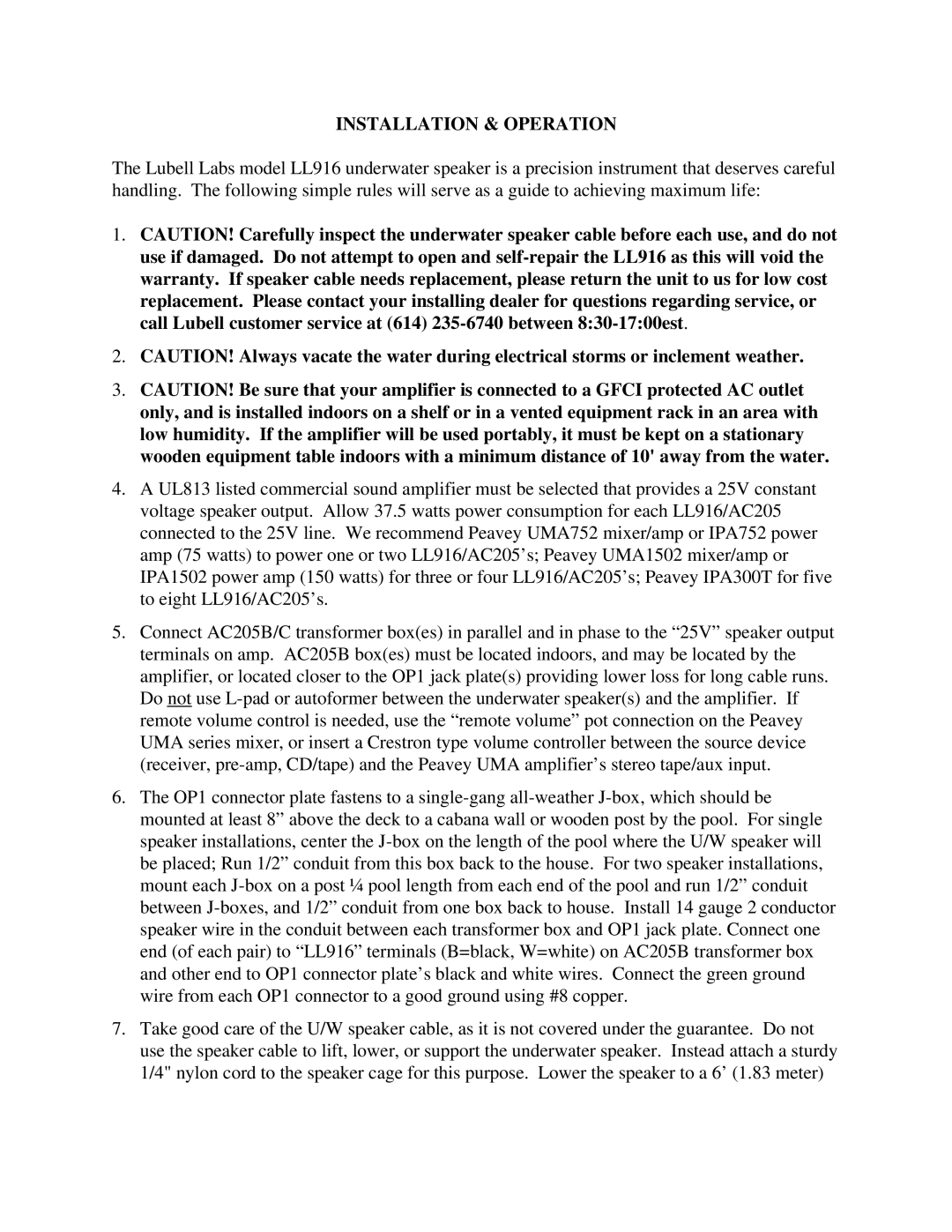INSTALLATION & OPERATION
The Lubell Labs model LL916 underwater speaker is a precision instrument that deserves careful handling. The following simple rules will serve as a guide to achieving maximum life:
1.CAUTION! Carefully inspect the underwater speaker cable before each use, and do not use if damaged. Do not attempt to open and
2.CAUTION! Always vacate the water during electrical storms or inclement weather.
3.CAUTION! Be sure that your amplifier is connected to a GFCI protected AC outlet only, and is installed indoors on a shelf or in a vented equipment rack in an area with low humidity. If the amplifier will be used portably, it must be kept on a stationary wooden equipment table indoors with a minimum distance of 10' away from the water.
4.A UL813 listed commercial sound amplifier must be selected that provides a 25V constant voltage speaker output. Allow 37.5 watts power consumption for each LL916/AC205 connected to the 25V line. We recommend Peavey UMA752 mixer/amp or IPA752 power amp (75 watts) to power one or two LL916/AC205’s; Peavey UMA1502 mixer/amp or IPA1502 power amp (150 watts) for three or four LL916/AC205’s; Peavey IPA300T for five to eight LL916/AC205’s.
5.Connect AC205B/C transformer box(es) in parallel and in phase to the “25V” speaker output terminals on amp. AC205B box(es) must be located indoors, and may be located by the amplifier, or located closer to the OP1 jack plate(s) providing lower loss for long cable runs. Do not use
6.The OP1 connector plate fastens to a
7.Take good care of the U/W speaker cable, as it is not covered under the guarantee. Do not use the speaker cable to lift, lower, or support the underwater speaker. Instead attach a sturdy 1/4" nylon cord to the speaker cage for this purpose. Lower the speaker to a 6’ (1.83 meter)
